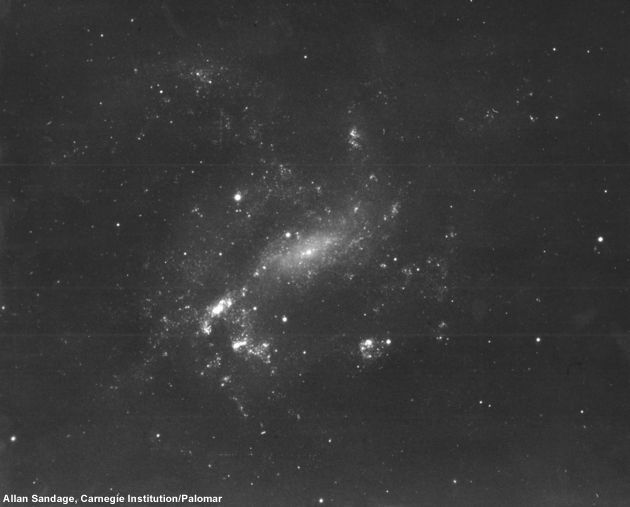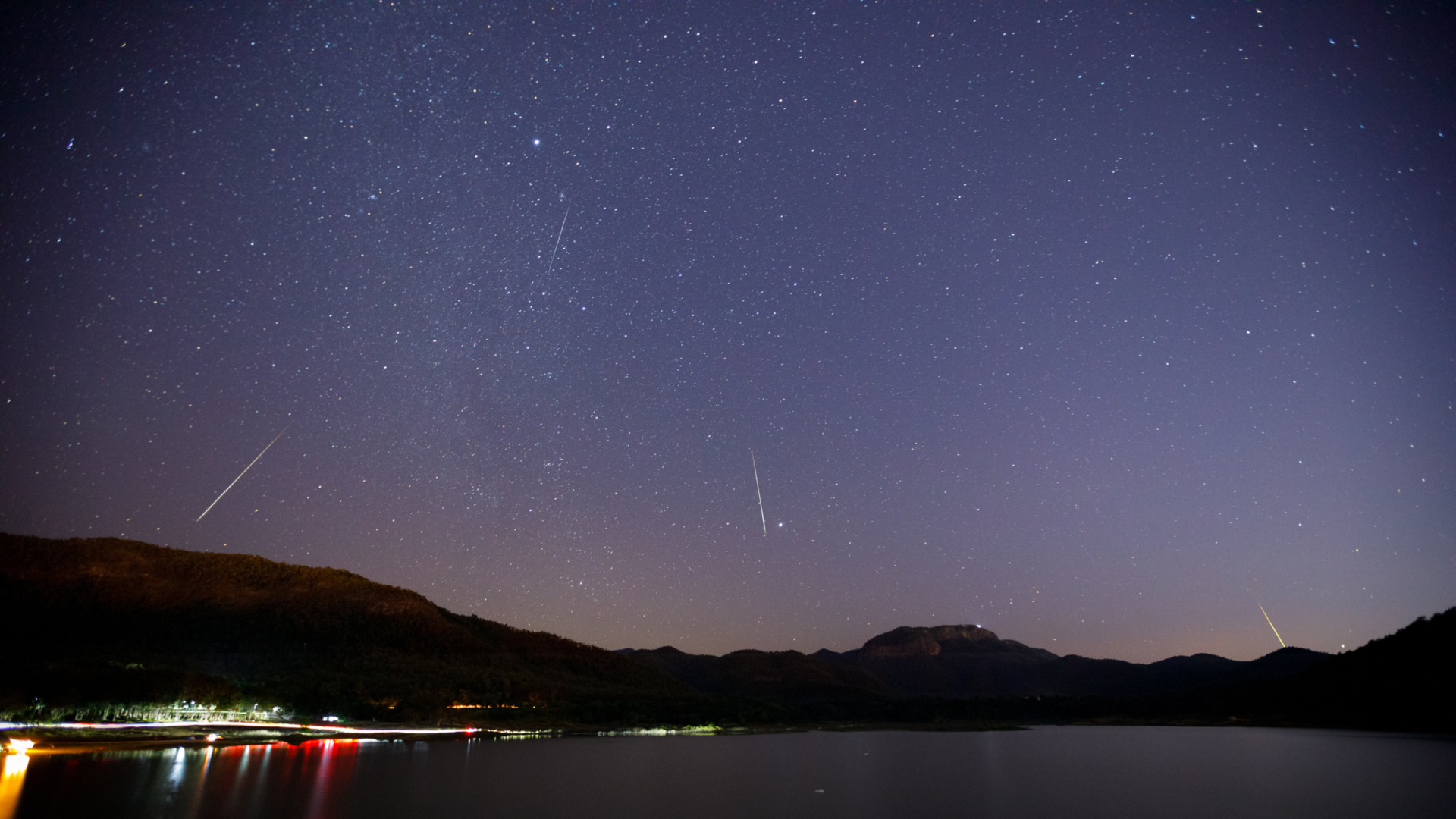Runt of the litter? Odd Black Hole Revealed

WASHINGTON, D.C. - A comparatively runty black hole that has perplexed astronomers for years because of its unusual mass is actually heftier than thought, but it is still the least massive of its type ever detected.
Observations by the Hubble Space Telescope and a mapping technique akin to Doppler radar have pinned down the mass of the stunted "supermassive" black hole 14 million light-years away, finding it about 300,000 times more massive than the Sun.
"It's a little smaller than I thought it was going to be," said astronomer Brad Peterson of Ohio State University. "Maybe if it's not accreting mass, that may account for its small size."
The black hole is at the center of the galaxy NGC 4395. Ari Laor, an astronomer with the Technion-Israel Institute of Technology in Haifa, Israel, led the study, which was presented here Saturday at the annual meeting of American Association of the Advancement of Science (AAAS).
The baby of big black holes
Black holes come in two primary flavors. The stellar variety are formed when massive stars collapse, and they are typically a few times the mass of the Sun. Supermassive black holes are colossal and may be the result of many mergers of less massive black holes. Scientists have found hints for some black holes of a middleweight class, but observations of this possible class have not proved firm.
Black holes cannot be seen, because light that enters them is trapped. Astronomers detect them by noting their gravitational effect on surrounding stars and gas, and also by spotting the radiation that is created when incoming material is accelerated and superheated.
Breaking space news, the latest updates on rocket launches, skywatching events and more!
Discovered in 1989, NGC 4395's central black hole has been long known to be small for its class.
Most supermassive black holes found at the center of galaxies are millions, if not billions, of times as massive of the Sun. One such supermassive object - containing as much material as about three million Suns - anchors our own Milky Way Galaxy.
"The nearest [black hole] in size to NGC 4395 would be a factor of three to five times more massive," Peterson told SPACE.com, adding that NGC 4395 is at least 100 times smaller than any other black hole found at the nucleus of an active galaxy. Active galaxies are those whose black holes are feeding voraciously, and they're notable for the intense radiation given off by the process.
Researchers aren't sure whether the NGC 4395 black hole remained small because it gobbled up all of the available stellar material or was starved of cosmic food all along.
"It may have never had the stuff in the first place," Peterson said, adding NGC 4395 is missing the dense, star-filled nucleus found in other galaxies.
Mapping a black hole
In order to measure the mass of the central black hole inside NGC 4395, researchers used a technique called reverberation mapping.
Just as with Doppler radar, which tracks radio signals that bounce off an object, reverberation mapping tracks the length of time it takes light signals to reach orbiting gas around an object. Since gas orbits faster around more massive black holes than smaller ones, researchers can use difference in times to determine the mass of an object.
"It's a relatively new technique," Peterson said. "We're still at the stage where there is the potential for us to be fooled...though we actually have two separate observations of this galaxy, which is very reassuring."
In the past, astronomers have estimated the NGC 4395's central black hole to be between 55,000 and 66,000 solar masses. But the new measurements by Laor and Peterson suggest the object contains a lot more material. The astronomers hope the measurement will help them better understand the role black holes play in the development of galaxies.
"Sometimes you can learn the most about an [astronomical] population by examining its most extreme members," Peterson said, adding that he and his colleagues hope to use reverberation mapping on other black hole sources. "We want to know if there's a distribution of [these objects] or if this is just an oddball."
Other recent studies have shown black holes to be integral players in the development of galaxies and the creation of stars.
This article is part of SPACE.com's weekly Mystery Monday series.

Tariq is the award-winning Editor-in-Chief of Space.com and joined the team in 2001. He covers human spaceflight, as well as skywatching and entertainment. He became Space.com's Editor-in-Chief in 2019. Before joining Space.com, Tariq was a staff reporter for The Los Angeles Times covering education and city beats in La Habra, Fullerton and Huntington Beach. He's a recipient of the 2022 Harry Kolcum Award for excellence in space reporting and the 2025 Space Pioneer Award from the National Space Society. He is an Eagle Scout and Space Camp alum with journalism degrees from the USC and NYU. You can find Tariq at Space.com and as the co-host to the This Week In Space podcast on the TWiT network. To see his latest project, you can follow Tariq on Twitter @tariqjmalik.
